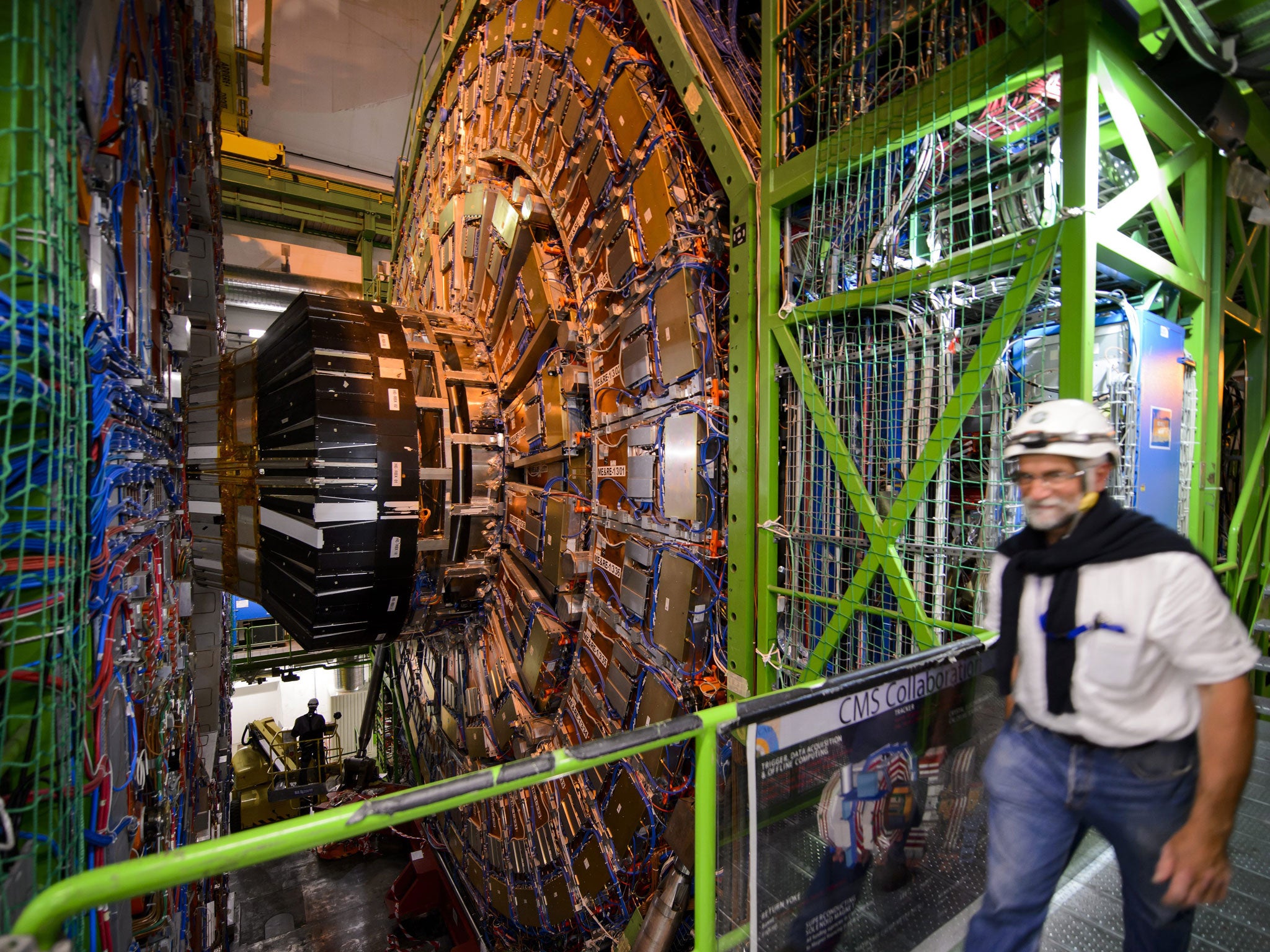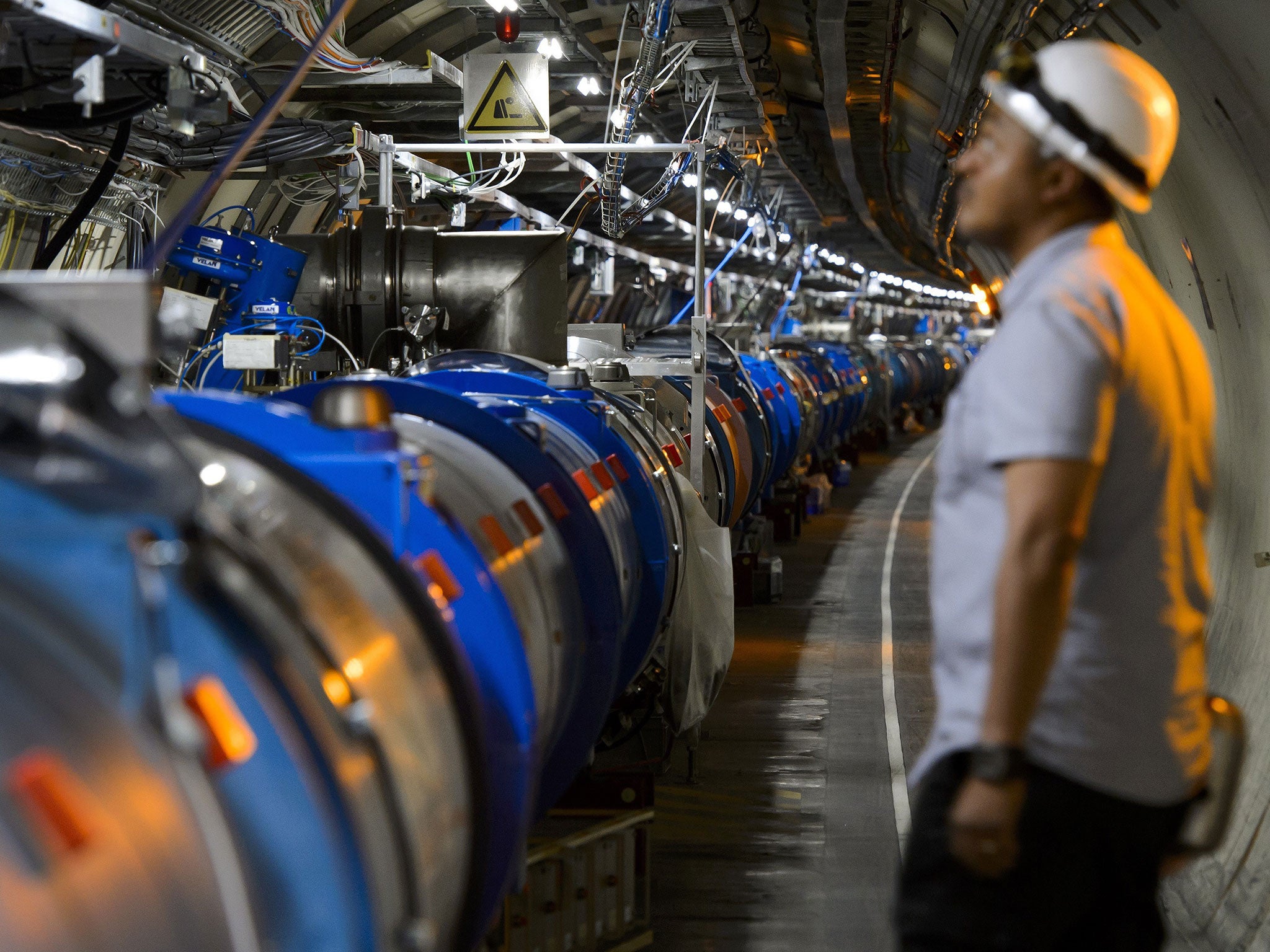Cern's Large Hadron Collider turns back on: scientists hope to explain dark matter and mysteries of the universe in 'season 2'
'Season 1' culminated in the 2012 discovery of the Higgs boson — and the second round might result in even greater discoveries

Your support helps us to tell the story
From reproductive rights to climate change to Big Tech, The Independent is on the ground when the story is developing. Whether it's investigating the financials of Elon Musk's pro-Trump PAC or producing our latest documentary, 'The A Word', which shines a light on the American women fighting for reproductive rights, we know how important it is to parse out the facts from the messaging.
At such a critical moment in US history, we need reporters on the ground. Your donation allows us to keep sending journalists to speak to both sides of the story.
The Independent is trusted by Americans across the entire political spectrum. And unlike many other quality news outlets, we choose not to lock Americans out of our reporting and analysis with paywalls. We believe quality journalism should be available to everyone, paid for by those who can afford it.
Your support makes all the difference.They are calling it “season 2”: they hope to see the first glimmer of light at the end of a very dark tunnel, and in the process explain one of the biggest mysteries of the Universe – the nature of dark matter.
The world’s most powerful sub-atomic particle accelerator – the Large Hadron Collider at the European Organisation for Nuclear Research (Cern) in Geneva – has been given the go-ahead to re-start after being closed for two years of maintenance involving a complete overhaul of the 27km underground ring of superconducting magnets.
Rolf Heuer, director general of Cern, said yesterday that over the next few weeks the collider will be gradually powered up to nearly twice the energy levels of “season 1” which culminated in the 2012 discovery of the Higgs boson, the subatomic particle that can explain why matter has mass.
Colliding two beams of opposing protons each travelling a tiny fraction short of the speed of light is expected to reveal important insights into some of the fundamental unknowns of physics, including the nature of the mysterious dark matter and energy that account for the vast bulk of the Universe – but which have never been seen.
“I have a dream. I want to see the first light in the dark universe. If that happens, nature is kind to me,” Dr Heuer said yesterday.
“If nature is kind to us, we would find such a particle. It would be a huge discovery,” he said.
Astronomers estimate that the matter we know about in space, such as the stars and galaxies, accounts for only about 4 per cent of the Universe. Dr Heuer and his team hope that season 2 could shed light on the 23 per cent of the Universe which is dark matter, as well as possibly the remaining dark energy responsible for the accelerating expansion of the Universe.

“We’re heading again into unexplored territory. It’s a new era in science,” said Dave Charlton, the spokesman for the Atlas experiment, one of the detectors attached to the collider designed to identify and measure any new sub-atomic particles given off during the proton collisions.
“We don’t know if we’re going to find dark matter this year…there’s a whole lot of questions we’re trying to answer,” Dr Charlton said. This includes a better understanding of the Higgs boson, and whether it is actually more than one sub-atomic particle, he said.
There are nearly 10,000 giant magnets within the hadron collider and each had to be strengthened to cope with the increased forces caused by going to the far higher energy levels of season 1.
“It’s almost a new machine and we need to train the magnets to cope with the higher energy,” Dr Huer said.
In addition to hunting for signs of dark matter, the Cern researchers will be looking for evidence of supersymmetry, a theory that could bring the force of gravity into the standard model of physics, as well as antimatter, the parallel substance of matter believed to have been created at the same time during the Big Bang.
What the collider hopes to find
Supersymmetry It is difficult to incorporate the force of gravity into the standard model of physics but the existence of more massive particles, a theory known as supersymmetry, could help to unify the fundamental forces of nature.
Antimatter Theory suggests that matter and its antimatter equivalent were both created in equal amounts at the time of the Big Bang. Yet only matter has been observed so far.
Big Bang conditions For part of the new season 2, collisions between lead ions will recreate the conditions of the Big Bang in a “quark-gluon plasma”, a fireball of hot, dense matter that can give rise to new particles.
Join our commenting forum
Join thought-provoking conversations, follow other Independent readers and see their replies
Comments